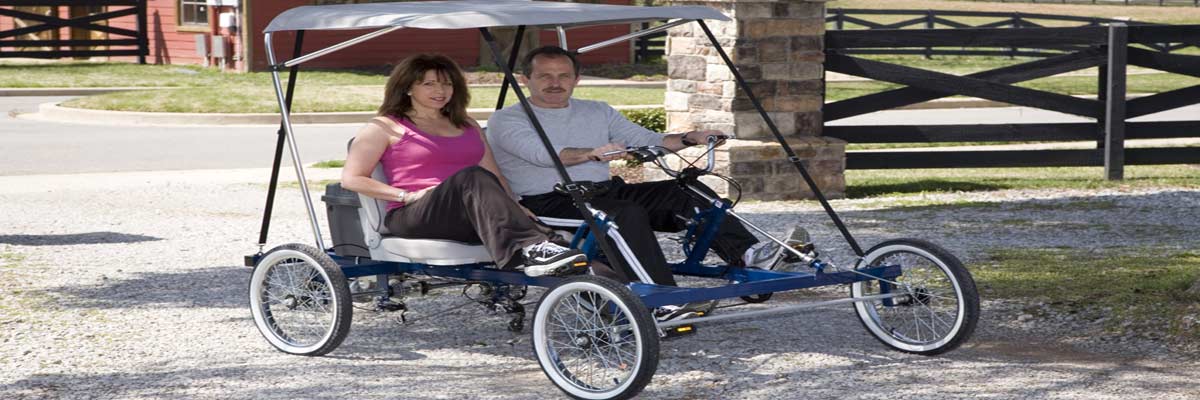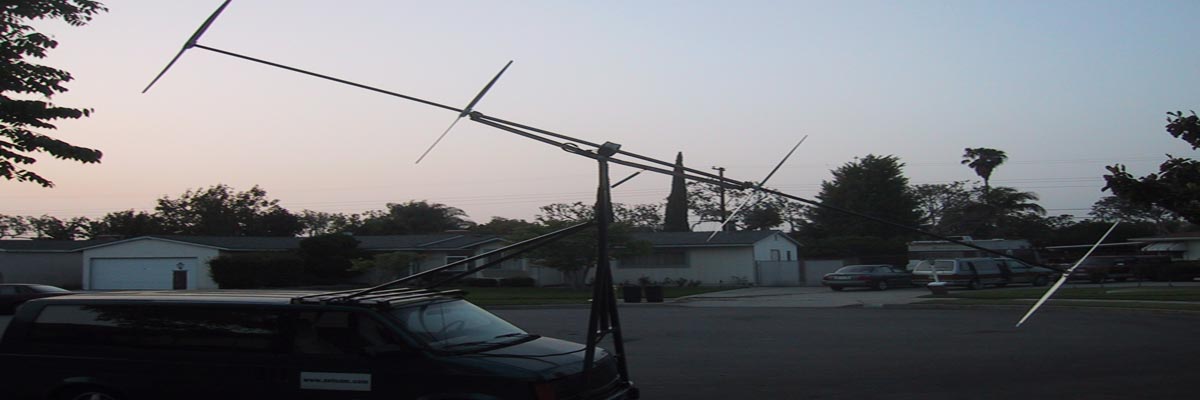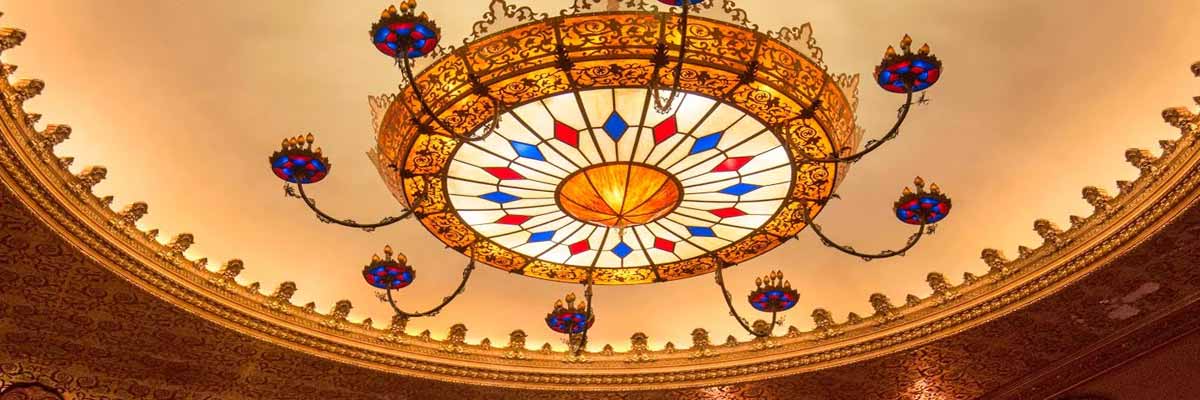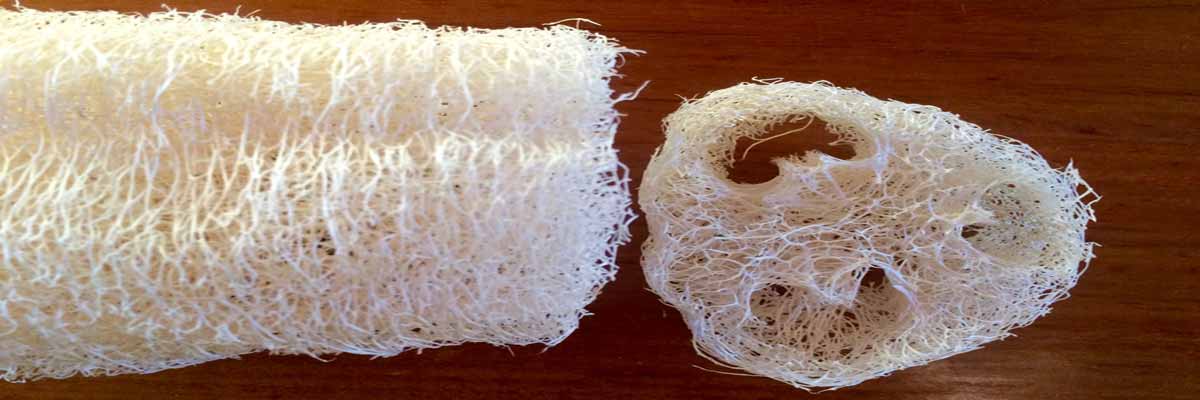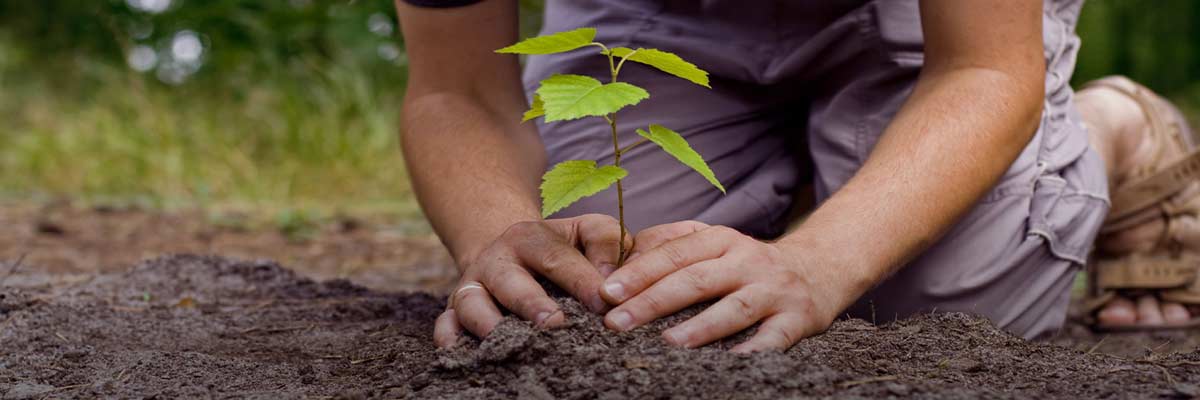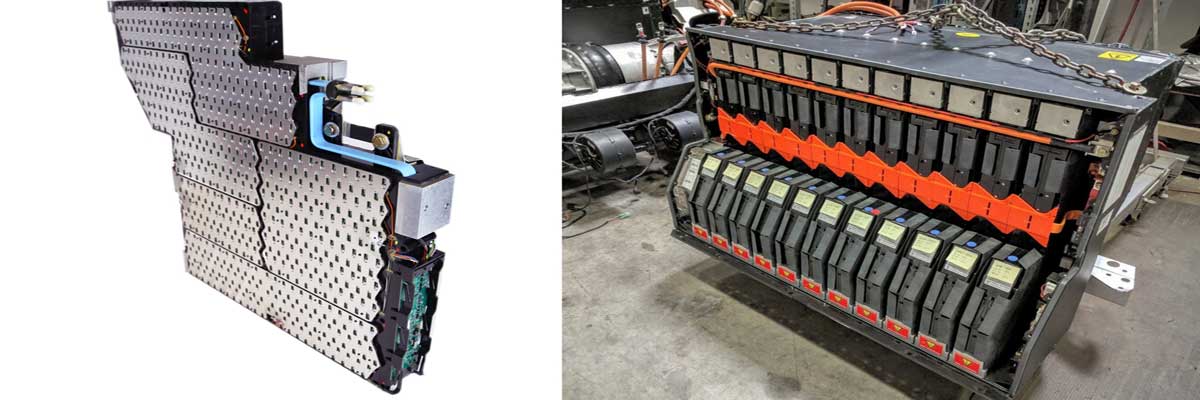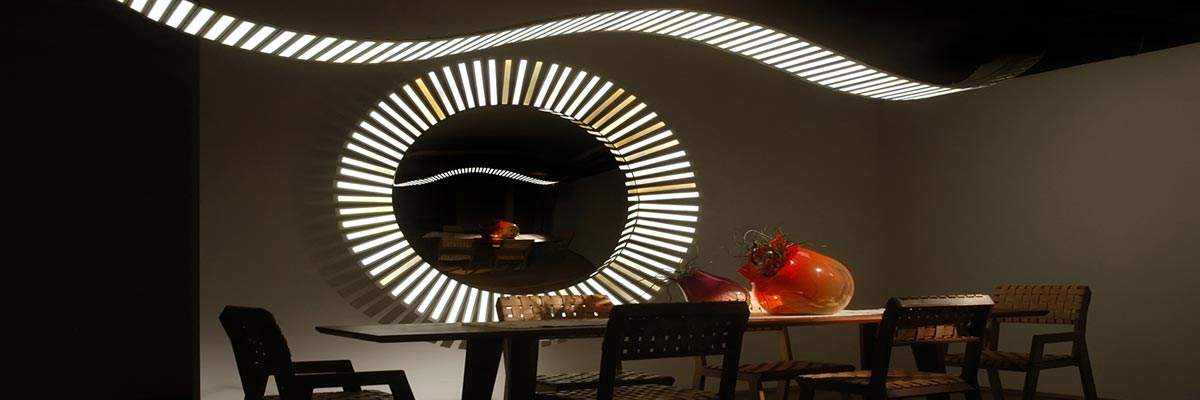The Green Picture: The Lexus Of Human-Powered Bicycles
The Rhoadescar is one of the swankiest human-powered two seaters I’ve seen yet. Especially with the top up to keep the rain/sun out. Granted, you probably won’t fit in the bike lane — and the highway will be a bit of a challenge, but I did it nonetheless.
The Selsam SuperTurbine Will Submerge During Rough Seas!
The Selsam SuperTurbine is one of the best designs I’ve seen yet for a wind turbine that can survive the hostile open seas. It also looks like it might be a bit of a bitch to navigate through with a tanker — not to mention the description states “the SuperTurbine probably won’t sink a vessel.” Makes you feel warm and cozy inside, doesn’t it? Still, based on designs, it looks like the pitch of the turbine should be high enough to keep you safe.
The advantages of this design are many. First, during large and fierce storms, these deep water turbines may intentionally lay down by flooding chambers, or even completely submerge to survive. Bonus! Second, flotation near the surface forms a fulcrum, with the weight of the rotors and driveshaft balanced by a downward force from the mooring below. According to the site, this allows the turbine to bend similar to arching your back to take advantage of wind patterns much more easily. Additionally, the rotors can be staggered, spiral, or in line.
World’s Largest LED Chandelier Is Beautifully Green
Behold! The wonderful efficiency of next-gen LED lighting is now being integrated with the grandeur of luxury illumination — specifically, massive chandeliers. Even more specific – the world’s largest chandelier currently installed at the Stanley theatre in Utica, New York.
This chandelier — weighing in at almost 7,000 pounds, 35 feet in diameter, 17 feet tall — uses 328 LEDs manufactured by Philips Luxeon and consumes just 1,120 watts of electricity. That’s almost seven times more efficient than conventional light bulbs. Not to mention the fact that will be many years before workers have to replace any of the bulbs due to burnout. Unless, of course, the Phantom has anything to say about it.
Damn Phantom.
Boycott The 2008 Beijing Olympics
Later this year the 2008 Olympics will open in Beijing, China. When that happens, a country with both serious environment problems and a pattern of widespread social injustice will be given international attention. If the Chinese government has its way, that country will not be portrayed as a contaminated badland where political repression and established censorship smothers its citizens. It’ll be best faux foot forward as the world looks on, or perhaps better phrased, looks away as a deeply flawed nation tries to avoid criticism for its abominable record on the environment and human rights. The International Olympic Committee opposes a boycott as does the Bush Administration. And you can be sure that corporate sponsors of the Games will not advocate such a move unless more consumers, or ah citizens support a boycott. Until then they “are trying to appear sensitive while arguing that the Games should not be politicized. So much for corporate leadership. Again it looks like no real change will happen unless public sentiment develops in support of directly addressing the record of China and its policies of devastation during past decades.
Harnessing The Power Of Luffas For Shade And Sponges
If you’re a regular reader, you no doubt know we here at Groovy have a fascination with the seemingly magical properties of the Luffa. Not only can it be harvested to create the sponge-like scrubber most people love in the tub, but it can also help shade your home and keep things cool in the heat of summer. Just ask John Lawvere — an entire side of his trailer in Arizona is shaded from the sun with several Luffa vines. Additionally, he makes some extra cash from his crop by selling the “sponges” for $5/each come harvest time. Says John,
“I teach Physics at a community college in Tucson, AZ. My remodeling/plumber friend helped me a lot at building supports for Luffa vines. We have an idea about building structures over parking lots (near apartment complexes and other businesses) to save those people money on air conditioning while producing a valuable crop.”
Not a bad idea, right? We applaud John and his amazing “Luffa Tunnel” — something he says “convinced my girlfriend’s mother (in Belarus) that I was a good man.” Ha, nice.
For our original classic, “How To Make (And Grow) A Luffa”, click here
Eco-Libris, Plant a Tree for Every Book You Read
According to the Eco-Libris 20 million trees for virgin paper used for the production of books sold in the U.S. alone. That’s a lot of trees… In an effort to help you pay back Mother Nature, Eco-Libris will plant a tree for each book you decide to ‘balance out’. Planting 10 trees costs $10, to ‘balance out’ 10 books. Eco-Libris works with planting partners to plant trees in developing countries.
“Our planting partners are organizations that work in developing countries. Their planting and conservation activities are an integral part of their efforts to help local communities in these countries move towards a sustainable future. We make sure that your trees will be planted where they provide significant value for both the environment and the local communities, who are very much involved and play an important part in the planting projects.”
For every book you ‘balance out’ you receive a sticker made of recycled paper, to mark the book as part of you effort to act in a sustainable way. When you are done reading the book trade it on BookMooch.
Tesla Gives Us A Magical Mystery Tour Of Lithium Battery Recycling
One of the largest misconceptions of electric cars is that the world will suddenly be inundated with toxic batteries that will seep into ground water, kill your dog, and practically ruin your marriage. Fortunately, battery recycling for green vehicles has been well planned out — even if there currently aren’t many electric-powered cars on the road to be concerned about. Showing us exactly what is possible, Kurt Kelty — an engineer that works for Tesla Motors — recently posted an interesting “Mythbusters” segment on battery recycling — what they’re made of and how they’re disposed of.
Some fascinating tid-bits: First, the Tesla Roadster’s battery pack or Energy Storage System (ESS) contains no heavy metals or toxic materials. By law, this means they could technically be disposed of in a landfill with no problems. However, their usefulness extends beyond pushing a car 0-60 in less than 4 seconds. Apparently, there are major differences in the demands on a battery for use in a high-performance sports car unlike, say, providing backup for a solar array. In fact, once the lithium packs are no longer performing well for the roadster, they may be recommissioned to be used as a power source for off-grid backup or load leveling.
GE Announces Breakthrough For Low-Cost Organic LED Production
Energy for lighting is one of the main resource hogs around the world. Staring at an image of the earth at night, it doesn’t take much to see how dependent we are. The recent shift to the CFL bulb has helped ease the burden of paying for energy costs, but its role in the lighting world may only be a stepping stone to the next, great efficient successor: the LED.
LEDs (or Light-Emitting Diodes) will slowly become the lighting standard over the next decade. But light bulbs won’t be the only products to take advantage of their efficient properties. A variety called OLED (or Organic Light-Emitting Diode) are thin, organic materials sandwiched between two electrodes, which illuminate when an electrical charge is applied. This technology is behind all those cool flexible displays and electronic ink displays we’re always seeing. They’re so thin, that they could be applied to rooms as a type of wall paper to glow at the touch of a finger or when someone enters the room. Till now, the process of commercially manufacturing OLEDs has remained expensive. However, a recent breakthrough from GE hopes to lower the cost-barrier and show that OLED can be created “roll to roll”. From the article,
